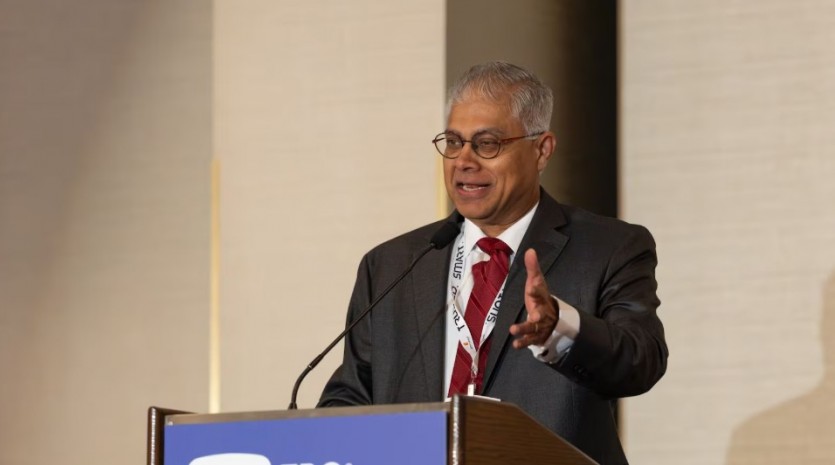Polypropylene market still shaky as overcapacity outpaces demand
main text
Polypropylene market still shaky as overcapacity outpaces demand
Ramesh Iyer outlined the latest trends in the polypropylene market at the recent Society of Plastics Engineers TPO Conference in Troy, Mich. (Photo by Frank Esposito)
The polypropylene resin market continues to be a tough one — and not for the faint of heart.
The sector is still struggling with too much capacity and not enough demand, according to market veteran Ramesh Iyer, who outlined the latest trends at the recent Society of Plastics Engineers TPO Conference in Troy, Mich.
Iyer, head of Americas content for global consulting firm ICIS, joined the company in 2021 after more than 30 years in materials roles with Asahi Kasei Plastics North America, Ems-Chemie and General Motors.
Overall, he said competition in the PP market is only going to intensify. A wave of new capacity — more than 69 billion pounds between 2019 and 2028 — is being added in Northeast Asia, particularly China. By comparison, the rest of the world will add just under 40 billion pounds during the same period, including just over 5 billion pounds in North America.
As a result, global PP operating rates have dropped from 87 percent in 2019 to 76 percent in 2025. And they're not expected to return to 2019 levels until 2040, Iyer said.
Global PP demand growth is expected to average 3.4 percent from 2024 to 2028, led by Southeast Asia at around 5.5 percent. North America is forecast to have the slowest growth in that period — about 1.5 percent annually.
"North American domestic demand has stagnated," Iyer said. "There's been minimal new capacity. And operating rates are recovering, but they remain subpar."
In the first eight months of 2025, North American PP sales fell nearly 1.5 percent, with regional production down almost 1 percent.
While the region has added propylene monomer capacity — a key feedstock for PP — those additions haven't translated into significantly higher propylene supply, Iyer noted.
He described U.S. propylene as "the most volatile petrochemical" in terms of pricing, largely due to low inventories, production outages and the shift toward ethane cracking.
Tariffs may have affected some PP end users, but the overall market hasn't seen much disruption, since only about 5 percent of PP made in North America is exported — and imports make up a similarly small share.
Profit margins for North American PP peaked in 2021 but have since fallen by about 40 cents per pound, Iyer said. He also noted that China's role in the global PP market has changed. Once a demand driver, the country has rapidly added capacity — and its aging population is beginning to weigh on domestic PP demand.
Looking ahead, Iyer said more global rationalization is likely for high-cost producers. In North America, supplies "will remain long for several years," he added.
Most growth opportunities will come from developing countries, Iyer said, and any long-term strategy for PP needs to factor in shifting global demographics.
* Edit : HANDLER
- PreviousJapan’s new rules push PET bottle makers to use recycled plastic 25.11.20
- NextAI makes material analysis faster and easier 25.11.20

